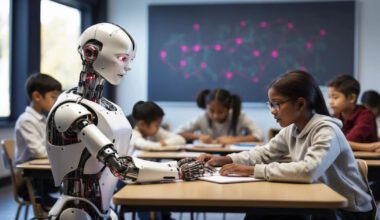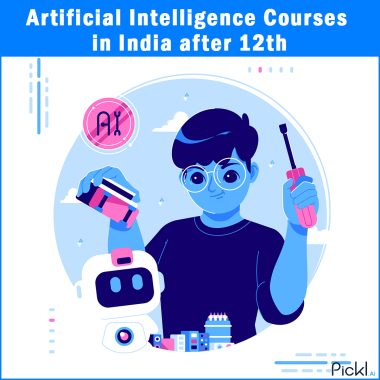Summary: This blog delves into five prominent AI models: foundation models, Large Language Models, multimodal models, diffusion models, and generative adversarial networks. Each model’s functionality and real-world applications are explored, highlighting their transformative impact across industries such as healthcare, entertainment, and creative design in today’s digital landscape.
Introduction
Artificial Intelligence (AI) has rapidly evolved, transforming various industries through innovative models that enhance decision-making, automate processes, and generate insights. Understanding these models is crucial for leveraging their capabilities effectively.
This blog explores five prominent AI models, detailing their functions, applications, and real-world examples.
5 AI Models That You Should Know

Artificial Intelligence (AI) is revolutionizing various industries with its diverse models. This section explores five essential AI models—foundation models, Large Language Models, multimodal models, diffusion models, and generative adversarial networks. Understanding these models is crucial for leveraging their capabilities and driving innovation in today’s digital landscape.
1. Foundation Models
Foundation models are large-scale Machine Learning models pre-trained on vast datasets using self-supervised learning techniques. These models serve as a base for various downstream tasks, enabling them to adapt to specific applications without needing extensive retraining.
The term “foundation model” emphasizes their broad applicability across multiple domains, making them versatile tools for developers and researchers alike.
How They Work
Foundation models utilize neural networks to learn patterns and representations from data. The training process involves feeding the model large amounts of unlabeled data, allowing it to recognize underlying structures and relationships.
Once trained, these models can perform multiple tasks such as text generation, summarization, translation, and question-answering by fine-tuning on smaller datasets relevant to specific applications.
For instance, a foundation model trained on diverse text data can be adapted for sentiment analysis or chatbot functionalities with minimal additional training. This flexibility makes foundation models particularly valuable in environments where time and resources are limited.
Example
OpenAI’s ChatGPT is a prime example of a foundation model. Trained on a wide range of internet text, it can generate coherent responses across various topics and contexts.
Businesses use ChatGPT for customer support, content creation, and even coding assistance, showcasing its versatility in real-world applications. Its ability to engage in natural language conversations makes it an invaluable tool for enhancing user experiences in digital platforms.
2. Large Language Models (LLMs)
Large Language Models (LLMs) are specialized AI models designed to understand and generate human language. They leverage deep learning techniques to process text data, enabling them to perform tasks such as translation, summarization, sentiment analysis, and more complex language-based functions.
How They Work
LLMs are typically built using transformer architectures that allow them to capture context and relationships between words effectively. During training, LLMs analyze vast amounts of text data to learn how language works—understanding grammar, context, idioms, and even cultural references.
By predicting the next word in a sentence based on previous words, they learn to generate human-like text.
The transformer architecture employs mechanisms like self-attention that help the model weigh the importance of different words relative to each other within a sentence. This capability allows LLMs to generate coherent and contextually relevant responses that mimic human conversation.
Example
Google’s Bard utilizes the Pathways Language Model (PaLM) to enhance conversational capabilities. By searching the web in real-time for answers, Bard can provide users with accurate information while engaging in meaningful dialogue.
This model exemplifies the impact of LLMs in improving user interactions across digital platforms like search engines and virtual assistants.
3. Multimodal Models
Multimodal models are AI systems capable of processing and understanding multiple types of data—such as text, images, audio, and video—simultaneously. This capability allows them to generate richer outputs by integrating information from different modalities.
How They Work
These models use techniques like computer vision for image processing alongside Natural Language Processing (NLP) for text analysis. By combining insights from various data types, multimodal models can perform complex tasks that require contextual understanding across different formats.
Training multimodal models involves feeding them diverse datasets containing multiple modalities so they can learn how different types of data relate to one another. For example, a multimodal model could learn how an image relates to descriptive text or how audio corresponds with visual elements in video content.
Example
DALL-E 2 is a multimodal AI model developed by OpenAI that generates images from textual descriptions. For instance, if given a prompt like “a two-headed flamingo wearing sunglasses,” DALL-E 2 can create unique visual representations based on that description.
This capability illustrates how multimodal models enhance creative processes in art and design by allowing users to generate images based on imaginative prompts.
4. Diffusion Models
Diffusion models are generative AI frameworks used primarily for image synthesis. They work by gradually transforming random noise into coherent images through a process of iterative refinement.
How They Work
The process involves adding noise to an image until it becomes indistinguishable from random noise and then reversing this process through a series of denoising steps. By learning the distribution of training images during the forward diffusion process, these models can generate new images that resemble the original dataset during the reverse diffusion process.
Diffusion models have gained popularity due to their ability to produce high-quality images with fine details while maintaining diversity in generated outputs. The iterative nature of diffusion allows for gradual improvements in image quality at each step.
Example
Stable Diffusion is a popular diffusion model known for creating high-quality images from textual prompts. Users can input descriptions like “a serene landscape at sunset,” and Stable Diffusion will produce visually appealing images that align with the given context. This technology has significant implications for content creation in various industries such as gaming, advertising, and entertainment by enabling artists and designers to visualize concepts quickly.
5. Generative Adversarial Networks (GANs)
Generative Adversarial Networks (GANs) consist of two neural networks—a generator and a discriminator—that compete against each other to create realistic data samples. This adversarial training process enables GANs to produce high-quality outputs that closely mimic real-world data.
How They Work
The generator creates fake data samples while the discriminator evaluates their authenticity against real data samples. The generator improves its output based on feedback from the discriminator until it produces results indistinguishable from genuine data.
This competition drives both networks to improve continuously: the generator strives to create more realistic samples while the discriminator becomes better at distinguishing between real and fake data. Over time, this leads to highly realistic outputs generated by the GAN.
Example
GANs have widely used in various applications including image generation and video synthesis. For instance, NVIDIA’s StyleGAN renowned for generating highly realistic human faces that do not belong to real individuals.
StyleGAN allows users to manipulate attributes such as age or gender while generating new faces based on learned distributions from existing datasets.
This technology has transformed fields such as fashion design and entertainment by enabling the creation of lifelike characters and environments without relying on actual photographs or videos.
Conclusion
Understanding these five AI models—foundation models, Large Language Models (LLMs), multimodal models, diffusion models, and generative adversarial networks (GANs)—provides valuable insights into how AI technologies function and their diverse applications across industries.
As AI continues to evolve rapidly, these models will play increasingly significant roles in shaping our digital landscape by enhancing creativity, improving efficiency in processes across sectors like healthcare or finance while also driving innovation through advanced capabilities such as natural language understanding or image generation.
By leveraging these powerful tools effectively within organizations or creative projects alike—businesses can unlock new opportunities for growth while addressing challenges faced today more efficiently than ever before!
Frequently Asked Questions
What are Foundation Models in AI?
Foundation models are large-scale Machine Learning systems pre-trained on extensive datasets using self-supervised learning techniques. They serve as versatile bases for various tasks like text generation or summarization without requiring extensive retraining.
How do Large Language Models Work?
Large Language Models use deep learning techniques to analyze vast amounts of text data. By predicting the next word based on previous context, they learn to generate coherent human-like responses applicable in various Natural Language Processing tasks.
What is the Significance of GANs?
Generative Adversarial Networks (GANs) consist of two competing neural networks—a generator and a discriminator—that create realistic data samples through adversarial training. GANs are significant for generating high-quality outputs in fields like image synthesis and video production.



